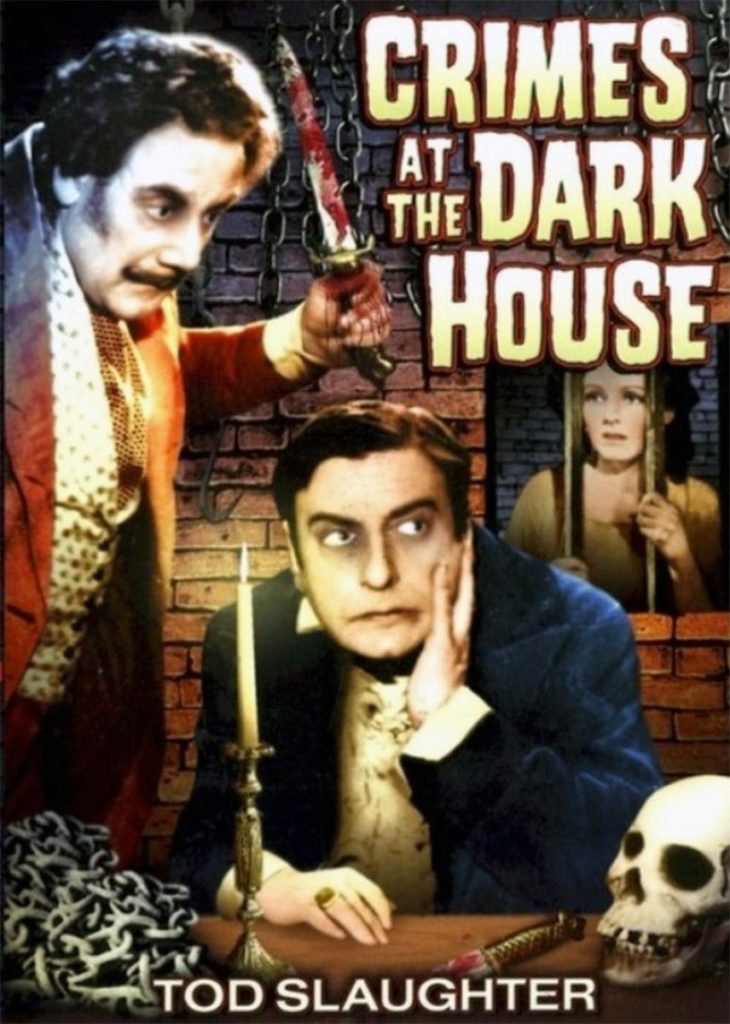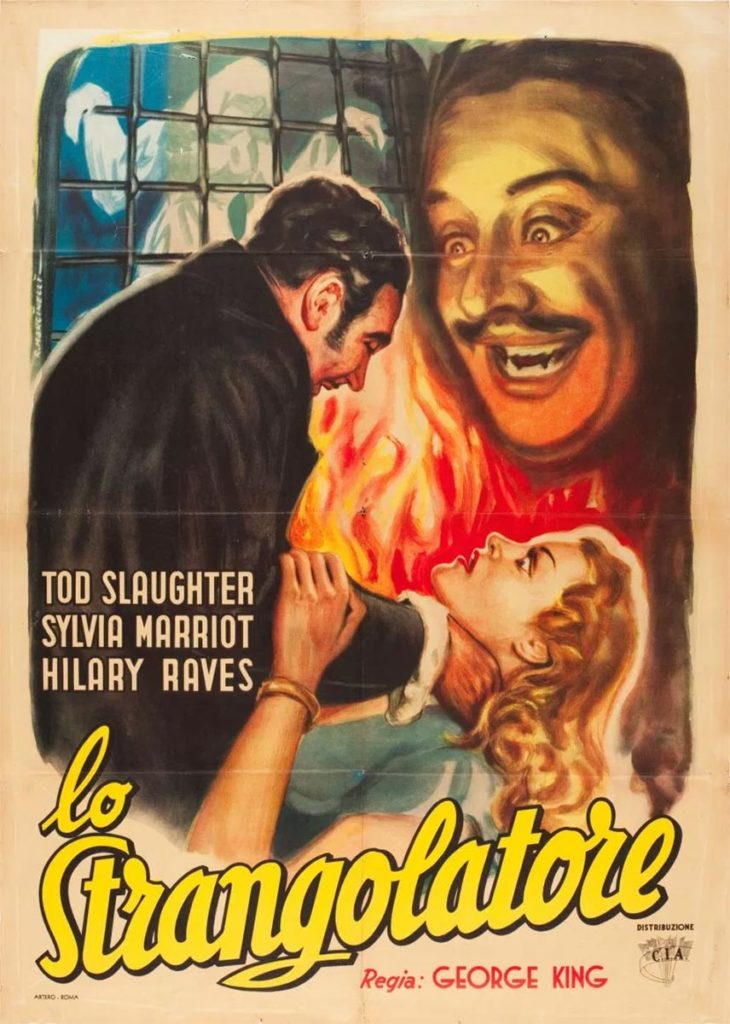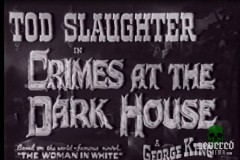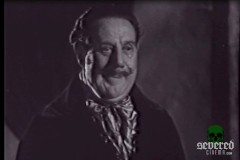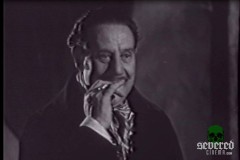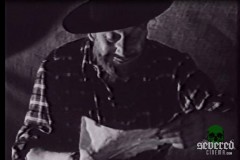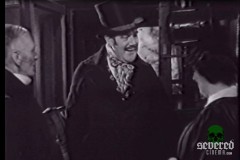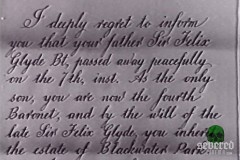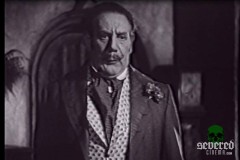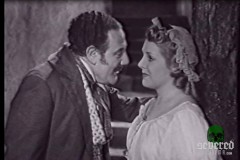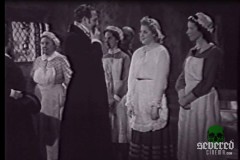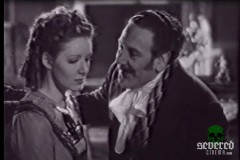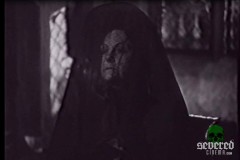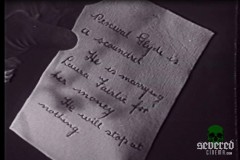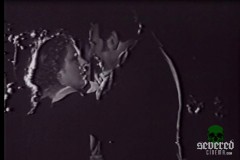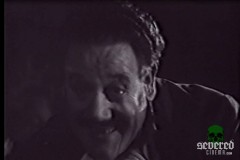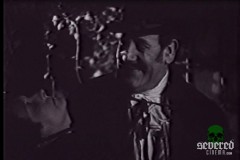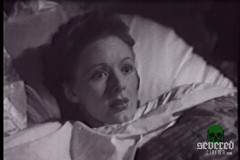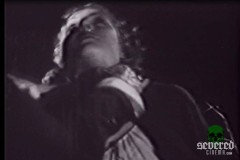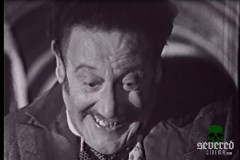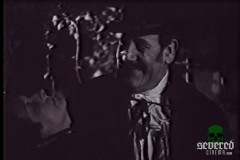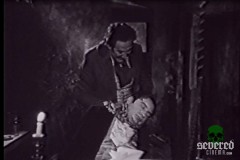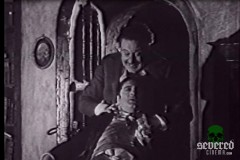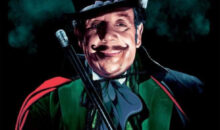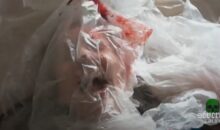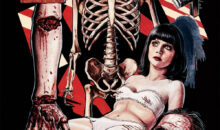Tod Slaughter’s Twisted Delight: A Gritty DVD Review of ‘Crimes at the Dark House’
It has been a good long while since I’ve dusted off an old black ‘n’ white movie from my collection, but I feel I have to finally share my love with you all for Tod Slaughter. He is a man lost in the annals of movie time to many, but adored by a cult following who seek and locate the Grand Guignol and melodrama of Mr. Slaughter.
Tod was a large heavy-set man built to be a villain – and what a villain. Many years did he tread the boards of stage shows as so many ruthless, sadistic and sometimes cowardly killers (oh, and he did one or two heroic leads in his time). Oh yes, this is the barnstorming monster who made the legend of Sweeney Todd (plus others) his own for many a year throughout the 1920s and into the ‘30s, before low budget super-stardom beckoned, and he hit the silver screen.
Powerful and adopting the most evil of cackling laughs as he murdered many a victim, Tod Slaughter never achieved the heights of other names around that time, yet he chilled a lot of filmgoers nevertheless. I chanced upon his movies back in the ‘90s on late night TV and watched Sweeney Todd, followed by his other known title, The Face at the Window. Every week another flick was shown, the more I lapped it up.
Crimes at the Dark House, from 1939, based on the novel, The Woman in White, is my favourite, simply due to the overwhelming gleeful ways his character kills. This person is actually nameless, for he adopts a fake personality throughout, taking the name of the man he first slays.
Thus we begin in Australia in 1850, and wealthy Sir Percival Glyde, after counting his takings for a day’s toil in the gold fields, settles down to sleep in his tent. Unbeknownst to him, a cackling and obviously insane, Tod Slaughter, is about to drive a tent peg through his skull (off camera of course). Afterwards he sits and proceeds to remove the dead man’s ring, plus other items. Then he reads a letter in which it appears Glyde’s father has passed away, and he will inherit the estate. The catch is, it has been twenty-five-years since Percival left so no one will truly know what he looks like now. Our murderer chuckles to himself as he reads the letter.
We shift to London and listen to the maids and servants all excited and discussing the return of Sir Percival Glyde and the assumed fortune he has made whilst in Australia. Forever the opportunist, the killer arrives dressed well in a coach. One question he asks near enough straight away is if anyone in the estate recalls him as a young man. “No, I regret to say, none.”
Meeting the staff, the music turns rather sinister as his leering eyes fix on a young maid, who bows and shyly looks away. He instructs that she will be his chamber maid and see to all of his needs. “Do you wish to see Mr. Merriman, now?” he his asked. It is the family lawyer, one person which does remember him as a youth. “So,” says, ‘Percival’, “He knew me as a boy, did he?” Sitting at a table, it is simply to sign all relevant papers of the estate. However he’s in for a shock. It transpires that everything is mortgaged and his ‘father’ left him a debt of fifteen-thousand. The plus side is, he has been placed into an arranged marriage with the niece of a family friend, of which good fortune will come – somewhere around the figure of one hundred thousand. Laurie’s father has also passed, but one of his wishes was that they would unite. Her Uncle Frederick, as legal guardian, is keeping the dream alive.
We meet her, and her over-the-top uncle, then the handsome male tutor who she has fallen for. Neither young lover knows what is to arrive soon. Meanwhile, our imposter is kind of tiptoe creeping around his new surroundings enquiring to directions to places because his memory isn’t quite as good as it should be. Things become more complicated for him upon the arrival of a chap called, Dr. Fosco and a lady who used to be a young love and romance of Percival Glyde – with news of ‘his’ child. However, the mother withdraws her claims and states that he is not who he says he is. Furious, he demands they leave.
Fosco, however, returns and requests to be taken into his confidence knowing he is an imposter. It so happens that the daughter in question holds an incredible hatred for her father. She is within an asylum – Fosco’s asylum, extremely unbalanced. They both come to a mutual and beneficial arrangement with one another. “Betray my trust, I will feed your entrails to the pigs!” promises ‘Percival Glyde’ as they depart.
His next journey takes him to meeting his soon to be wife, with whom he properly leers over, almost dribbling. She requests a release from the agreement but he refuses, instead forcing a savage kiss upon her lips. “After twenty years in the wild, I feel the need for a good wife and companionship.” he drools. He returns home, drunk on lust and finds Fosco waiting. His ‘daughter’ has escaped and is probably coming to take revenge on him. Fosco decides to stay over. “Her insane hatred of you is bound to bring her here.” Soon a woman in white is seen on the grounds.
Faced throughout the short running time by blackmail, jealousy and blind madness, Tod Slaughter’s evil character happily kills all in his way, five in total – usually with a dramatic cackling laugh. Some use of early quips strengthen the sadistic tone. For instance: “So, my dear, you wanted to be a bride? So you shall be – a bride of death!” as he disposes of his pregnant bit on the side, maid’s strangled corpse after learning she plans to betray him unless he takes her instead of Laurie. He even runs away and points at the dead woman as he laughs. Brilliant!
Cliché and quite unintentionally comical in parts, Crimes at the Dark House hasn’t aged well but remains a pure slice of old school entertainment. The funniest moment comes courtesy of the music. After their marriage, Laurie waits in bed, absolutely terrified as Tod Slaughter’s looming figure approaches – a small sinister chuckle upon entering the room and the music is totally priceless for the whole scene.
It was standard and common for many of the people on screen with Tod to have short careers in films, but a few faces in this one didn’t do too badly. David Horne and David Keir went on for years, whilst poor sweet faced, Sylvia Marriott who played Laurie, never made it into large roles, though she did appear in the classic Amicus anthology, Asylum, plus Empire of the Sun. Her career ended in The Bourne Identity – not the movie, but an ‘80s TV series. Yep, I had no idea that existed. Incidentally, an uncredited maid played by one, Grace Arnold, had the fortune to be an actress who lasted many decades in cameos to small roles and supports.
George King was perhaps one of many ‘King of the Quickies’ circulating Britain around the time. His flat and uninspiring direction is an example of the fast turnouts because a government requirement at the time stated that so many British films had to be made for so many bills and matinees. Ah, yes, that was patriotic and pretty cool for lots of struggling talents at the time – at least they got paid, very little, but it was something. George partnered with Tod for six films, then loads of unknown titles like The Shop on Sly Corner, The Chinese Bungalow and The Case of the Frightened Lady. You gotta dig names like those haven’t you?
Alpha Video happens to be a low no thrills under the radar bargain bucket company. It is what it is. Their releases are simply poor transfers off VHS tapes or really battered TV prints. The audio suffers as well as the visuals. As for extras? Well, what can we expect from a long forgotten old melodrama? Nothing much. We get a few trailers for other things they own (The Ironbound Vampire???!!! Less said about Bohicathe better!! Fucking painful!!) A few other Tod Slaughter features happen to have cleaner prints on other labels, and Crimes at the Dark House is out on Odeon as part of their Best of British series. No idea how polished the transfer is.
As a final note on the Alpha Video release, I have to mention the rib cracking cover. It’s superb. At no point in the film does a bloodied knife appear (the back illustration has to be the most hilarious), but it looks wonderful anyway. Stylish artwork also has cast members appear as grey faced corpses.
AKA: meurtres a la maison noire, Lo strangolatore
Directed by: George King
Written by: Frederick Hayward, Wilkie Collins, HF Maltby
Produced by: George King, Odetta King
Cinematography by: Hone Glendining
Music by: Jack Beaver
Editing by: Jack Harris
Cast: Tod Slaughter, Sylvia Marriott, David Horne, Geoffrey Wardwell, Rita Grant, Hay Petrie, Hilary Eaves
Year: 1939
Country: UK
Language: English
Colour: Black & White
Runtime: 1h 8min
Distribution: Alpha Video
DVD SPECS:
Aspect Ratio: 4:3 1.33:1
Region: NTSC R0
Audio: Mono
SUPPLEMENTAL MATERIAL:
– Trailers


